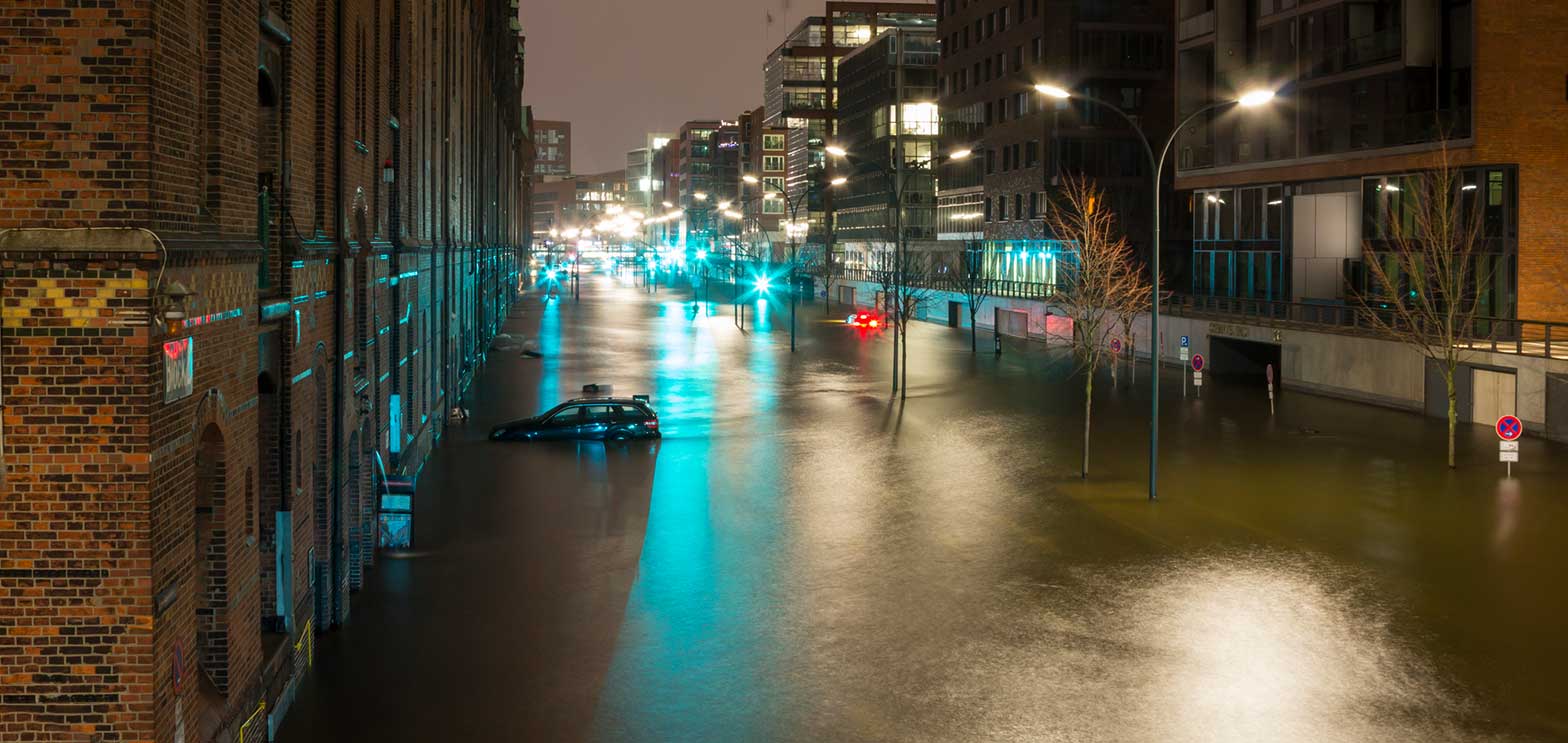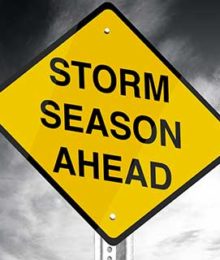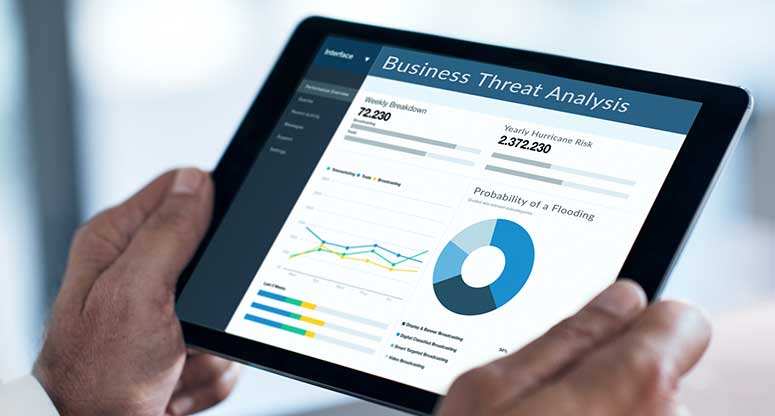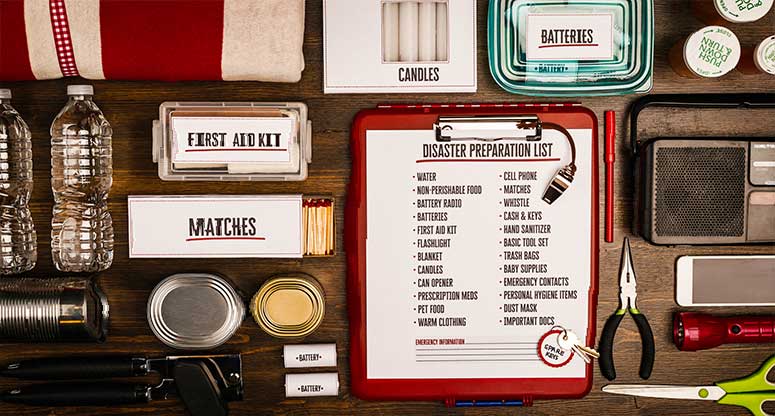Contact Center Operations6 minute read
Where Business Continuity Meets Disaster Recovery: Planning for Hurricane Season and Beyond
As another hurricane season ramps up, here’s a rundown of what businesses should know about business continuity and disaster recovery planning.

Whether it’s your call center, headquarters or just a subsidiary office, having any part of your operations in a hurricane zone can be not just stressful, but even devastating, during storm season, or a natural disaster. The importance of creating a business continuity plan that incorporates the latest recovery strategies is essential. Yet, this important step is all too often neglected, and especially by smaller businesses.
According to the Federal Emergency Management Agency (FEMA), almost 40% of small businesses don’t re-open after a disaster. That’s alarming figure, taken from a CNBC hurricane preparedness report, correlates with a SurveyMonkey Small Business Survey revealing that most small business owners disregard natural disasters as true business risks Instead, they regard the economy, healthcare, terrorism and even the unknown “other” as bigger potential threats.
“According to the Federal Emergency Management Agency (FEMA), almost 40% of small businesses don’t re-open after a disaster.” Share on X
All this points to the need for a business continuity plan in the face of a disasters, such as the hurricanes that now regularly bear down on America’s Atlantic seaboard. (Even Pacific states like Hawaii are now increasingly at risk.) And, among businesses that do have plans for disaster preparation and recovery, truly comprehensive business continuity plans are less common.
What’s the difference between a business continuity and disaster recovery plan? While both are preventive strategies that outline backup plans in the face of serious disruptions, disaster recovery focuses more on specific instances of maintaining infrastructure, customer communications and employee safety in the face of natural catastrophes. (Read more about disaster recovery planning for hurricane season.)
Business continuity takes the larger picture to ensure that operations run as smoothly as possible throughout the year before, during and after any potentially catastrophic storm. In that sense, a disaster recovery plan is usually a component within a larger business continuity strategy.
“The business continuity plan takes the disaster recovery plan one step further,” writes Charmayne Smith in a Houston Chronicle analysis of business continuity and disaster recovery planning. “This plan outlines how the business will continue its operations after the disaster. It also outlines how the business will continue its operations after smaller, less disastrous events, such as power outages. The plan outlines how and where the business will operate if it is forced to move to a temporary location. It identifies the long-term, crucial strategies that are needed to ensure that the business maintains stability and generates profits.”
The business continuity plan takes the disaster recovery plan one step further.
Make no mistake, then: Not all businesses with continuity plans in place have a disaster recovery component, and vice versa. The following, then, is a rundown of the key factors to consider when creating a business continuity plan that includes disaster recovery—essential for any business with any part of its operations (and especially its call center) located in a storm or hurricane zone.
“Not all businesses with continuity plans in place have a disaster recovery component, and vice versa.” Share on X
How to Create a Business Continuity Plan that Includes Disaster Recovery
Understand your risk. “Unlike earthquakes and tornadoes, hurricanes generally do not strike without warning,” notes the Insurance Institute for Business & Home Safety (IBHS). “This means businesses may have a limited amount of time to verify and check critical elements of their disaster plan.”
That means time to plan—and time to understand what to plan for. Even if you’re not in a hurricane zone, your call center may be susceptible to other disasters, such as fires or earthquakes. “Are you within striking range of a major hurricane?” asks Chris Morris in the CNBC article. “Has there been any historic flooding? If you’re in any sort of metropolitan area, have you considered terrorism? And don’t forget cyber attacks.”
To answer these questions, and best gauge your level of risk, your first step should be to perform a threat analysis. As with most items in your business continuity plan, this is best done with the help of professionals who can chart probabilities that may not occur to you.
Identify the mission-critical aspects of your business. In the event of a natural disaster, what sectors of your company absolutely must remain operational? Consider this question in terms of operations, customer outreach, fulfillment—the factors most important to the type of business you provide. Then, when beginning your continuity plan, focus on “backing up” these most important elements—whether by relocating them to a safer area, or partnering with a vendor in another state to provide the services if yours are forced offline.
Double-check your insurance coverage. Ensure that your existing insurance coverage allows for disaster recovery. This includes not just material damage like flooding, fire and other fallout, but also business interruption insurance—a necessity if any part of your operations (and especially your call center) are in a hurricane zone. Some insurance plans also will cover the costs of regenerating lost data—although, as specified below, it’s best to avoid this scenario with backup planning.
Secure your records. Documentation—such as expense reports, contact lists and especially sensitive client data—are not only critical to your continued operation, but they’ll also likely be necessary during any post-disaster recovery period when you’re applying for relief funds. It’s crucial to make sure they’re secured—and even if you’re not in a disaster zone, using a cloud-based system to back up your data is highly recommended.
Consider your customers. During a disaster (or its aftermath), you may be busy securing your physical infrastructure and continued operations, with most of your calls going to vendors and insurers. But it’s equally important to keep your customers in the loop. Remember, they expect business as usual, regardless of your situation—and if they don’t receive it, there’s little to stop them from turning to your competitors.
Plan for personnel disruptions. Often, the key focus of a business continuity plan is operational, and physical infrastructure—and understandably so, as the business cannot proceed without them. But neither can it proceed without the people who work in the business. Consider how a potential disaster can disrupt your business continuity by affecting employees’ personal lives, including:
- Homes of employees may be located in disaster zones, even if your company isn’t.
- The commute to work may be compromised.
- Employees’ families may be in harm’s way, leading to a distracted workforce (and increase in no-shows).
- Disruption of basic services on which everyone depends (food, water, safety).
If these factors aren’t all accounted for in your plan, then it doesn’t matter how unscathed your infrastructure or operational footprint is—the results will be just as disastrous, and your business may cease to operate effectively.
Consider on-site safety. Even if no personal disruptions as outlined above affect your employees, a major disaster can still put them in serious physical harm while they’re working. Their safety is your responsibility: Equip your facility with emergency provisions and safety measures, and make sure you have backup communications so you can contact them during network outages.
Consider vendor communications and stability. If any of your core services are delivered by third-party vendors, double-check to ensure that communications are in place for continued service during times of disaster. If they’re located in another region, or state, consider also that your vendors may be subject to their own disruptions—and make sure they have a plan for it.
Consider the aftermath. The real damage caused by hurricane may not be fully known until well after the storm passes. Foundational damage from flooding, structural damage from high winds, water damage from heavy rains—the true scope of this sort of damage might only be apparent after a professional, post-disaster assessment. It’s important to factor the possibility of this kind of damage into your disaster recovery/business continuity plan.
Trust the experts. Consider calling in the services of professionals if you’re uncertain about any of these points, or simply don’t have the labor or expertise to create a truly comprehensive business continuity plan that includes disaster recovery.
And remember, if your call center is in a hurricane zone—and potentially, even if it’s not—outsourcing this important service to a reliable, experienced vendor can go a long way toward ensuring your business continues unabated during and after major storms or other disasters.
If you’re interested in learning more about the benefits of outsourced contact center solutions, contact us today.

Schedule a complimentary consultation with an expert. We can help you maintain business continuity.
Contact us today.
This Might Interest You...
This website uses cookies to personalize and improve your experience. Continue browsing our site if you agree to our Cookie Policy or feel free to Manage Cookies yourself.






